This article previously appeared on Crossfader
If there has ever been a ubiquitous truth to the game industry, it’s that developers aren’t raging party boys. The popular image is that of the timid recluse, geeky creatives who, under the right circumstances, can get really intellectual. Cue Josef Fares, a cocaine-addled skeeze who by all signs appears to have been introduced to the medium after stumbling upon a gaming computer on the floor of a Swedish House Mafia concert. To say that the film director-turned-developer is a change of pace for gaming’s landscape would be an understatement. He’s the type of fraternity brother that makes Jonathan Blow look like Sigmund Freud. None of this is intended to be slanderous. Fares is a breath of fresh air for gaming, the type of loudmouthed personality we need more of. If interactive media is reaching the threshold of being held in equal regard as film, we need mouthpieces for the masses, because when all is said and done, Josef Fares is the Michael Bay to Hideo Kojima’s Akira Kurosawa.
A WAY OUT is a game developed by a man with radioactive confidence. It’s an unapologetic homage to cinematic history—from its SHAWSHANK prison warden to its OLDBOY hallway fight to its SCARFACE third act—and a daring exploration of next generation media all at once. If that sounds like a lot to swallow, it’s because it is. Few indie titles have been quite this loud, insisting to be taken seriously as trail blazers while simultaneously trying their damndest to rival Naughty Dog titles. If A WAY OUT has taught me anything, it’s that you can have your cake and eat it too; the downside is that it leaves everyone else with half a cake, and a fragment of a good idea.
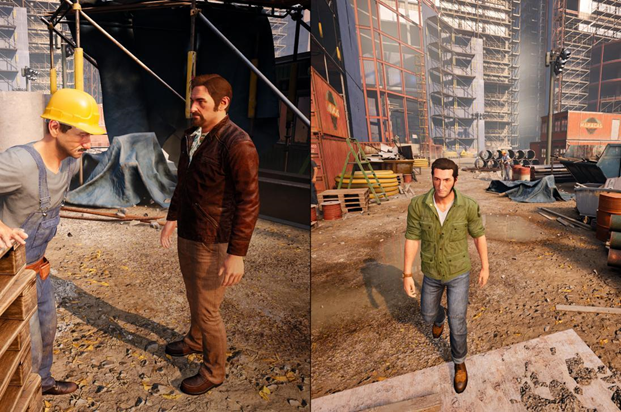
Just saying, this would’ve been #dope if Leo and Vincent had fallen in love by the end
Commanding the fates of two incarcerated Sylvester Stallone stunt doubles, you and your buddy embark on an epic escape that takes them from shank central to darkest Peru. Leo is a hot-tempered career criminal with the face of Nicolas Cage, and Vincent a composed family man who bears a striking resemblance to Channing Tatum in LOGAN LUCKY. It takes a while to process that the markedly younger Leo already has a family whilst Vincent is only now expecting his first child, but when all is said and done, analyzing A WAY OUT’s character writing is a punishment nobody needs to endure. Put simply, A WAY OUT is gaming’s equivalent to a college thesis film made by a Christopher Nolan fanboy with way too much money, with Fares himself portraying Leo to boot.
What does matter is that these two men share a mutual disdain for a certain Harvey, and make it their utmost priority to break out of prison to wreak their overdue vengeance. What follows is an exit strategy so easy you’d think the men were never incarcerated in the first place, conveniently providing exit tunnels for our heroes with just a few days of preparation. Anyone expecting an intensive prison break sim a la THE ESCAPISTS will be sorely disappointed. A WAY OUT is unashamedly easy gaming, the type of puzzle solving that’s less HITMAN and more UNTIL DAWN. I like the idea of A WAY OUT, but its pitfalls as an interactive narrative make it a hard game to recommend. Its developers understand what makes it unique, yet fail to capitalize on the format.
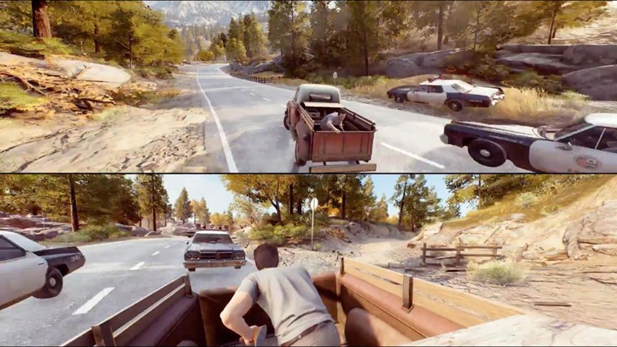
I dare you to tally up how many life sentences Leo stacks up in this sequence
A WAY OUT’s modus operandi involves dropping players in sandbox maps, only to railroad them through puzzles that usually have two possible outcomes. Even then, no conclusion is radically different from the other, and no decision made early in the game offers much of a ripple effect later down the line. Most of A WAY OUT plays itself, creating an illusion of immersion that occasionally shatters in the face of the more trivial interactive segments. From hammering on wood to ringing bicycle bells, A WAY OUT’s environmental design is almost entirely predicated on being completely arbitrary. Scenarios that could potentially foster creative, cooperative play are instead reduced to their base storytelling elements.
It’s a quality that rears its ugly head once you begin to notice the game’s insistence on switching aspect ratios for cutscenes. The fact that playable sequences might as well be videos reaffirm the sneaking suspicion that A WAY OUT is a terrible film repackaged into an average video game. But why is it that this translation equates to a package that isn’t insufferable? It certainly helps that A WAY OUT’s experimental presentation is a nostalgic throwback to the days of local multiplayer gaming, and its key developer’s love for his players (as overbearing as it is) is unquestionably commendable. The fact that only one person needs to own A WAY OUT in order for two players to enjoy it as an online experience is reason enough to support the game financially. It’s just fascinating how confused the final product is.
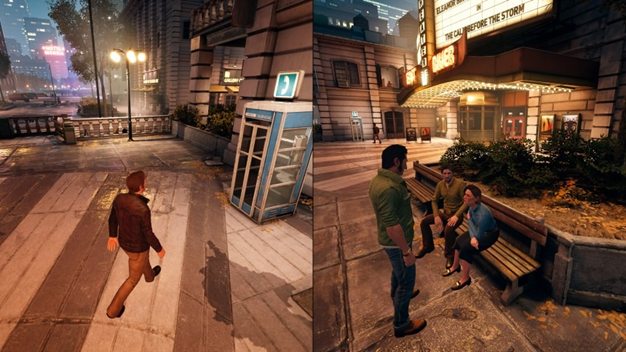
Pictured above: Vincent progresses the plot while Leo waits with his dick in his hand
All of this is to say that, yes, maybe A WAY OUT is the first instance of vulgar auteurism in gaming. It’s a project made by someone with undeniable technical expertise, and an understanding of how one could revolutionize game mechanics. Unfortunately, the same man often ignores the singular gimmick that ought to be the entire selling point of the game.
Consider this: the ideal sales pitch for A WAY OUT is “a split-screen prison break experience by way of a David Cage project where cutscenes on one screen don’t interrupt gameplay on the other.” A WAY OUT contains the component parts of a puzzler, a cover-based shooter, a racing game, and a neverending quicktime event all at once, yet Fares never feels inclined to demand real teamwork in any of these scenarios. Players are assigned tasks that aren’t accomplished cooperatively as much as they are performed simultaneously; Vincent drives getaway while Leo shoots at the cops, but neither action is contingent on the other. Instead, the game scrambles to give each player their own spotlight, rather than letting them share the stage. It’s this scatterbrained mentality that keeps A WAY OUT from ever narrowing its focus enough to deliver a game that screams “CO-OP.” As much as I admire its ambitions, it never actually becomes the game it bills itself as.
Having said that, Fares almost entirely redeems the pitfalls of A WAY OUT with his finale, one that—despite opening up a Mariana Trench of plot holes—certainly elevates much of the game’s prompted button-mashing into something rather cathartic. It’s a reversal that puts the character in the inconvenient situation of having to choose between making a decision based on “allegiance” and “competitiveness.” For a game that’s categorically dunderheaded, this finale registers as a brilliant reversal of the Quantic Dream model. It’s a brief moment that justifies the game’s feverish, slapdash genre-hopping by going for guttural instincts, something that, dare I say, a geek the likes of Todd Howard could never have come up with. For a game that plays it so safe for so long, it’s oddly transcendental to craft a climax so metal. For better or worse, it literally feels like the training wheels had been ripped off the bicycle at the 11th hour, a form of ricochet experimentalism that could only come from a designer who has tried molly.
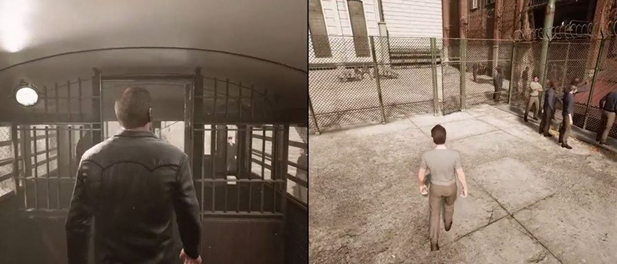
“Fucking nerds”
The result is an experience that’s more tutorial than game. As soon as players get the hang of the ins and outs of A WAY OUT, it switches gears entirely, never quite sure of what it wants to be. It’s the underdeveloped levels, the overproduced set pieces, and the undemanding puzzles that reveal Josef Fares’ cardinal sin: his game is a spec piece, a showreel for what cooperative play could look like on current generations. I applaud him greatly for trying his hand at a genre I long perceived dead, but had he settled on making his project a lean, two-hour prison break game with two dozen ways of escape, he might’ve had a milestone on his hands. Instead, he’s delivered a game that has players eagerly anticipating Splinter Cell co-op play, only to deliver a trumped up Telltale game.
And still, there’s something really passionate buried between the code of A WAY OUT. It’s indubitably flawed, but it’s also trying to change the game. Fares may not have fully realized A WAY OUT’s potential, but he’s definitely onto something in his approach. Maybe being too big for your britches is exactly what independent gaming needs, a proclamation that, yes, developers should go ahead and make that AAA title on an indie budget. As stupid as the end result might be, we’ll have pushed a step closer to that final frontier, proving that game designers don’t have to be Java-fluent hermits, the same way film directors don’t have to be tech-savvy cameramen.




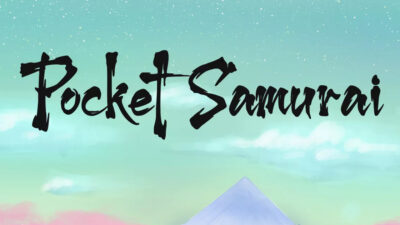
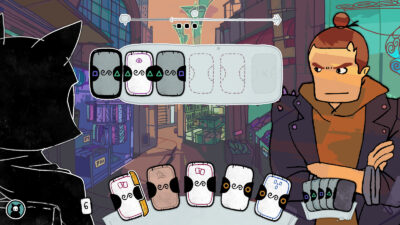





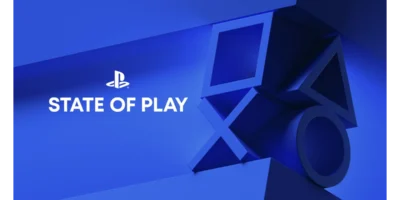
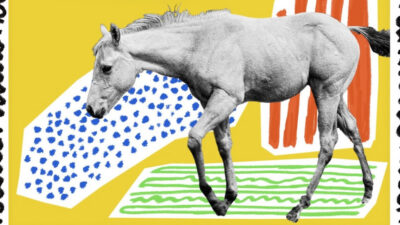
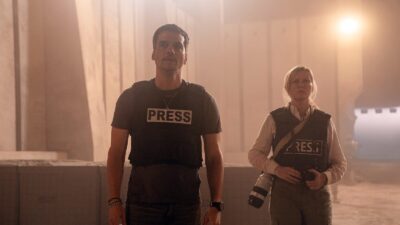


Comments